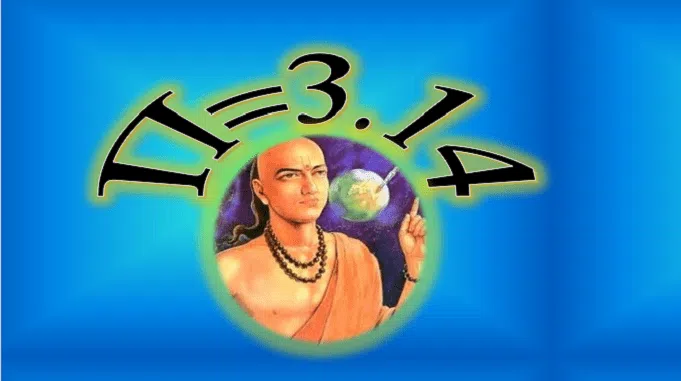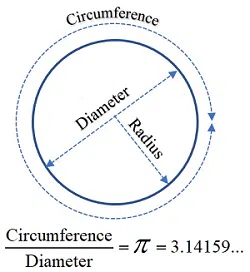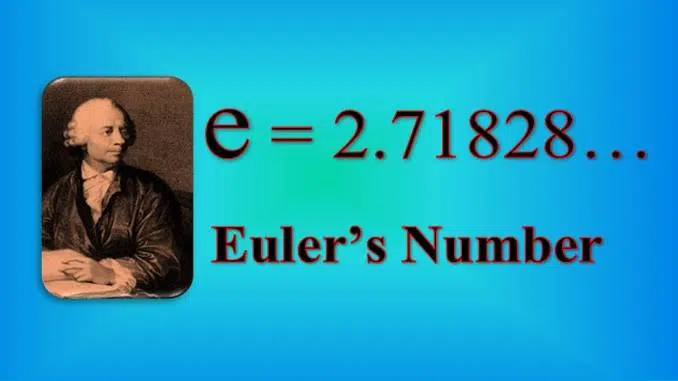
Aryabhatta Indian Mathematician & value of Pi (π):
Aryabhata was one of the best astronomers and mathematicians of ancient times. He was among the first to use algebra.
He has written his famous work ‘Aryabhatiya‘, which is a mathematics book, in poetic verses. Most of the information given in this book is related to astronomy and spherical trigonometry. 33 rules of arithmetic, algebra, and trigonometry are also given in ‘Aryabhatiya’. Not only this, he invented equations to solve complex mathematical problems easily, which are still used by people all over the world today.
Read Also on Pi Day 2023: Why Do People Enjoy Pi Day?
Aryabhata, the great mathematician who invented the decimal system in mathematics and made the world aware of zero, had also propounded the principle of pi (π).
Let’s know some interesting things about Pi (Aryabhatta’s contribution to pi):
It is an indisputable truth that the exponent of the theory of Pi was also Aryabhatta, in other terms, Aryabhatta discovered pi.
Despite this, from Archimedes to Newton, everyone discovered about pi and put their values in front of the world.
Archimedes said that pi lies between 223/71 and 22/7. Archimedes is often called the designer of mechanical devices, but his contribution to mathematics is also incomparable. Archimedes could have used infinite series in the same manner as is used in modern divisible calculations. He used his ‘method of technique completion’ to find the approximate value of pi.
Brahmagupta, another Indian mathematician, advanced the discovery of pi to new heights. It is believed that the pyramid builders of Egypt had knowledge of pi. However, no written proof of this is available.
Although the need for this ratio and related research has been going on for a long time, the sign of pi (π) was first used by William Jones in 1706, but in 1737 by the Swiss mathematician Leonard Euler. Since then it has gained fame.
1. What is Pi (π)?
The 16th letter of the Greek alphabet is Pi.
In geometry, The ratio of the length of a circle’s circumference to its diameter is known as pi. In each circle, this ratio is 3.141, but the whole number after the decimal has not yet been calculated, so it is considered infinite.
Value of Pi by Indian Mathematician Aryabhatta –
Aryabhatta has written in Sanskrit propounding its principle.
“Chaturadhikam Shatmashtgunam Dwashashtistatha Sahastranam।
(चतुराधिकं शतमष्टगुणं द्वाषष्टिस्तथा सहस्त्राणाम्।)
Ayutadvaysya Vishkambhasya Aasannau Vritparinah ॥
(अयुतद्वयस्य विष्कम्भस्य आसन्नौ वृत्तपरिणाहः॥)”
Meaning: Add four to 100, multiply by 8, and then add 62,000. By this rule, the circumference of a circle with a diameter of 20,000 can be found. That is, if the diameter of a circle is 20,000, then its circumference will be 62,832.
It is noteworthy that in spite of accurate and correct calculation to four decimal places, Aryabhata, who insists on truth, does not consider this value to be pure. Rather they were considered adjacent (near).
2. Using the Pi (π):
Pi is mostly used in geometry. The number Pi is used to calculate the area and circumference of a circle. The tradition of writing numbers in radians made it an integral part of trigonometry. It is used in almost every branch of mathematics. In science and engineering, the number Pi is also used.
It is also used extensively in conjecture or probability. Buffon’s Needle problem is the biggest example of this.
You might not use it yourself every day, but Pi is used in most calculations for building and construction, quantum physics, communications, music theory, medical procedures, air travel and space flight.
You can imagine that NASA regularly uses pi to calculate the trajectories of spacecraft.
3. Calculation of Pi (How to calculate Pi):
We have known about Pi for 4000 years, but even today, even with the world’s fastest supercomputer, humans have not been able to calculate it correctly.
There are many examples of the calculation of Pi in the history of ancient India. On the basis of the calculation, different sizes and types of Yagya-Altars (यज्ञ-वेदियां) were made.
Aryabhatta had solved some difficult questions. For example, the number that will come by adding the areas of two right equilateral squares, making a ‘right’ equilateral square of that area, and converting that shape into a circle equal to its area, etc.
Pi (π) is an irrational number. An irrational number means that it is a fractional number whose absolute value can never be worked out. If you write in a normal fraction, it is written as 22/7, but when you convert it to a decimal, no matter how many digits are removed after the decimal, the whole is not divided.
4. Pi (π) Day:
The following pi-related questions are frequently asked: “Why do we celebrate Pi Day? What is the official Pi Day? Is March 14th National Pi Day? Why is 3.14 called Pi Day?” The quick answers to these questions are provided below.
Pi has been assigned a value of around 3.14, so Pi Day is celebrated every year on March 14. March 14 is also the birthday of the great scientist Einstein. Therefore, the importance of this day also increases.
In 2009, the US House of Representatives also approved the celebration of Pi Day, after which this informal event was promoted not only throughout America, but all over the world, and now it is being celebrated in many countries.
‘Pi minute‘ is also included in the series of interesting elements of mathematics, when seven decimal values of pi are obtained at exactly 1:59:26 on March 14, i.e. 3.1415926, then discussions and debates are started all over the world on the use, importance, etc. of Pi.
Pi is not just about math classrooms. Larry, a scientist working in San Francisco, first organized Pi Day in 1988, in which all employees ate fruit pies in a circle.
The New Jersey city of Princeton has its unique way of celebrating Pi Day. Einstein had spent 20 years of his life here, so apart from eating pie, reading poetry, and discussing the importance of pie, there is also a competition for Einstein’s lookalike.
5. Value of Pi (π) after the decimal to trillions of digits:
This time on Pi Day, we have rounded up the value of Pi after the decimal to 100 trillion digits.
This amazing Pi-enthusiast Peter Taub has done this in November 2016 after counting round the clock for 105 days. He designed a computer with 24 hard disks (6 terabytes each) so that the information after each step could be saved. A special computer program was also used for this.
This value of pi, which is 220 trillion digits, the size of the computer file in which it is recorded is 9 terabytes. If this value is printed in book form, then a million books of 1-1 thousand pages will be less. So after doing all this, the value of Pi that came out from the hard work of three and a half months is very accurate. The question arises, what is the need for such a precise value, why are we lying behind the Pi?
If seen, the value of Pi that the American space agency NASA uses for rocket launches in space has only 15 digits after the decimal. And it is said that to solve the complex and subtle mysteries of the universe, a maximum of 40 marks will be required. So many believe that behind the craze to calculate the value of Pi to as many digits as possible is the urge to demonstrate the computer’s ability.
Some believe that the motivation for finding the value of Pi more accurately is something else.
Pi is an irrational number. That is, we can go on calculating its marks. After counting the number of digits, it may be found that none of these numbers is repeated more often than any other. If no digit in an irrational number is repeated more often than other digits, then that irrational number is called ‘normal’. There seems to be an attempt at increasing the value of Pi further to prove its ‘normality’, although in the real world this would not matter.
There is one more thing – proving Pi normal cannot be based on calculations alone. This would require mathematical proof.
Read Also – Invention and Historical Development of the Number Zero in Hindi
(Sources – Features)
Tags: about aryabhatta in english, achievements of aryabhatta, short note on aryabhatta, aryabhatta indian mathematician, introduction of aryabhatta contribution of aryabhatta towards mathematics, write about aryabhatta, few lines on aryabhatta, aryabhatta and pi, discovery of pi by aryabhatta, aryabhatta discovered pi, digits of pi, Is pi irrational
Copyrighted Material © 2019 - 2024 Prinsli.com - All rights reserved
All content on this website is copyrighted. It is prohibited to copy, publish or distribute the content and images of this website through any website, book, newspaper, software, videos, YouTube Channel or any other medium without written permission. You are not authorized to alter, obscure or remove any proprietary information, copyright or logo from this Website in any way. If any of these rules are violated, it will be strongly protested and legal action will be taken.




In this article,the Aryabhatta sanskrit meeaning section, have indicating total calculation as 62232, but it actually comes to 62832,please correct it
Thanks a lot.
Very good article about pi. Once when I was in Germany at that time also my instinct querry about pi how its value deduced as 22/7. Thnx for sharing such a nice explanation.